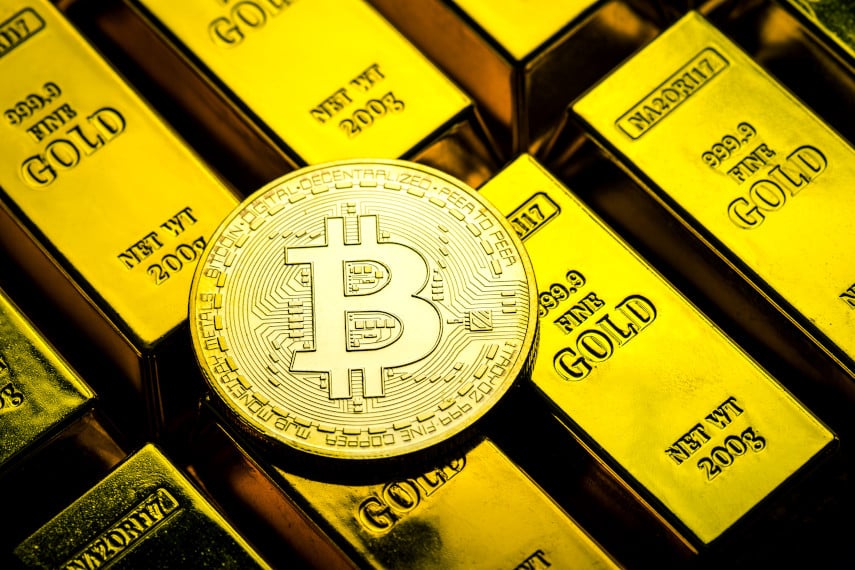
To finish our series on Gold and Silver 101, we provide you with this glossary to define commonly used terms in coin and precious metals markets. You may have seen or heard many of these terms, but may not be completely familiar with their meaning. This glossary can help serve as an aid to help you learn more about precious metals terms and terminology and help increase your understanding of precious metals markets.
Find the previous installments of the Gold and Silver 101 series here:
Gold and Silver Glossary
Alloy
A mixture of two or more metals. Metals such as copper and silver may be mixed with gold to change its color and improve its hardness. Silver is often alloyed with copper to improve its hardness.
Ag
The chemical symbol of silver on the periodic table, derived from the Latin word for silver, argentum. The atomic number of silver is 47.
Ask
The minimum price a seller is willing to accept in order to proceed with a sale.
Assay
An analysis carried out on a metal to determine how pure it is. A series of these analyses can also be carried out to determine the alloys present in a metal.
Au
The chemical symbol for gold, derived from the Latin word for gold, aurum. The atomic number of gold is 79.
Avoirdupois
The system of weights (pounds, ounces, etc.) used in everyday commerce in the United States. The avoirdupois system is not used for precious metals markets, which use the troy system instead.
Bar
A quantity of refined metal that is normally in a rectangular shape. Larger bars are often produced by pouring molten metal into a mold, and are also referred to as ingots. Smaller bars may be minted or stamped.
Bid
The maximum price a buyer is willing to pay in order to proceed with a sale. The spread between bid and ask is an indicator of an asset’s liquidity. Generally, the smaller the bid/ask spread, the more liquid the asset is.
Blank
A round metal disc used to mint coins. Also referred to as a planchet. Coin blanks are most commonly punched from sheets of metal, but in some cases can also be forged.
Britannia
British bullion coins first minted in gold in 1987. Silver Britannia production began in 1997. Platinum Britannia production began in 2018.
BU
Stands for “Brilliant Uncirculated” and is used to describe a coin that is in essentially new condition, as it was when it left the mint.
Buffalo
The American Buffalo gold coin is a 24-karat gold bullion coin first issued by the US Mint in 2006.
Bullion
Bullion refers to precious metals that have been refined to a high purity level and that are often traded in bulk quantities. Bullion is most usually traded in coin or bar form.
Bullion Coin
A coin produced from precious metals and intended to be held as an investment or store of value rather than used in everyday commerce. Bullion coins produced today normally have a nominal face value that is less than the value of the metal used to produce them.
Carat
Alternate spelling of karat. See karat for definition.
Cash
When referring to cash purchases of precious metals, cash means that the funds used to purchase precious metals come from non-retirement accounts, such as bank accounts, and are paid using check, wire, bank transfer, etc., and that the coins or bars purchased are not intended to be held by a Gold IRA, Silver IRA, or other tax-advantaged account.
When referring to distributions of Gold IRA or Silver IRA assets, cash refers to a distribution through check, wire, bank transfer, etc., rather than a distribution of physical precious metals.
Circulated
Coins that have been put out in the market for circulation in everyday commerce. These coins will feature wear from use, and normally don’t have the same luster that uncirculated coins have.
Coin
A piece of metal that is often accepted as legal tender in a particular area. Coins are normally round and flat, and are normally stamped with images and text to identify their value, metal content, issuing authority, year of production, etc. Production can be by a government mint or a private mint, with most coins being issued by governmental authorities.
Commodity
A physical asset that is often a raw material for use in agricultural or industrial production and is widely available and fungible. The value of established tradable commodities is determined on markets, with value deriving from scarcity and potential use.
Condition
The state of a gold or silver coin, round, or bar. Coin conditions normally range from About Good to Uncirculated.
Counterfeit
A reproduction of a coin, bar, or other commodity by someone other than the original entity that was authorized to produce it.
Depository
A secure facility that stores precious metals. Coins or bars owned by a Gold IRA or Silver IRA are stored in a bullion depository.
Face Value
The legally defined monetary value imprinted on coins.
Fineness
The purity of a precious metal, normally measured in 1,000 parts of an alloy. For example, a gold coin of .995 fineness means that the coin contains 995 parts gold and 5 parts of another metal.
Fine Weight
The weight of the precious metals contained in a coin. Most precious metals coins are marketed based on their fine weight, which for most IRA-eligible coins is roughly same as their gross weight. Some IRA-eligible gold coins, like the American Gold Eagle, may weigh more than their fine weight because their fineness is less than the normal .995 minimum standard.
Gold Eagle
In modern usage, the series of American 22-karat gold bullion coins. First produced in 1986 and produced in 1/10, ¼, ½, and 1-ounce sizes. From 1792 to 1933, gold eagle referred to the US gold eagle coin with a face value of $10.
Gold-Silver Ratio
A ratio showing how much silver can be bought with the prevailing cost of an ounce of gold. This ratio is based on the prevailing spot prices, and not actual market prices. For example, a ratio of 70:1 means that 70 ounces of silver could theoretically be purchased for the cost of one ounce of gold.
Good Delivery
A series of specifications issued by the London Bullion Market Association (LBMA) to define the characteristics of gold and silver bars used to settle transactions in the London wholesale bullion market. Good Delivery bars are generally around 400 ounces for gold and 1,000 ounces for silver.
Gold IRA
An IRA account that owns physical gold coins or bars.
Grading
The process of determining the condition of a coin, normally with respect to collectible or numismatic coins.
Ingot
Often used interchangeably with bar, although normally used to refer to larger bars of precious metals that are poured rather than stamped or struck.
Intrinsic Value
A measurement of the value of the metal content used to make a coin.
Junk Silver
Silver coins previously used for circulation whose value derives from their metal content rather than their numismatic or collectible value. In the United States, junk silver most often refers to pre-1965 silver coinage.
Karat
A measure of the proportion of gold relative to other substances in a metallic object, measured in 24 parts. One karat is equal to 1/24. Gold coin alloys expressed in karats are most often 22-karat or 24-karat.
Kruggerrand
The South African 22-karat gold bullion coin. First produced in 1967, the Krugerrand has become one of the most popular and widespread gold bullion coins. Due to their .9167 fineness, Krugerrands are not IRA-eligible.
Legal Tender
Currency that is legally recognized as satisfactory payment to settle a debt, or that must be accepted as payment to settle a debt.
Lettered Edge
Raised letters or symbols on the edge of a coin, as opposed to the more common reeded edge. These letters are often produced by using a segmented collar die when striking a coin.
Maple Leaf
Canadian bullion coins. Production of the Gold Maple Leaf began in 1979, while production of the Silver Maple Leaf began in 1988.
Market Value
The actual selling price of gold or silver bullion. The market value includes any premiums to the spot price.
Melt Value
Calculated by multiplying a coin or bar’s metal content by the spot price. This indicates the bare minimum value of the metal in a coin or bar.
Mint
A company that manufactures gold coins, round, or bars.
Mint Mark
A letter or symbol on a coin that identifies the mint that produced the coin.
Mint State
Often refers to uncirculated coins. Mint state coins are coins that are minted as though intended for circulation, but that haven’t circulated and therefore show no signs of wear. They are in the same condition as when they left the mint.
Numismatic Coins
Collectible coins whose value derives from mint marks, dates, condition, rarity, or other collectible factors, and not from the value of their metal content.
Obverse
The front of a coin. The obverse of a coin normally contains an image of a head or some other principal design feature.
Orientation
The relationship of the vertical orientation of the obverse and reverse of a coin. In coin orientation, the designs are aligned opposite of one another, so that when a coin is rotated along its vertical axis the reverse will be upside down when compared to the obverse. For the reverse to be right side up, the coin must be rotated on its horizontal axis.
In medallic or medal orientation, when the coin, round, or medal is rotated along its vertical axis the reverse will be right side up along with the obverse.
US coinage is minted in coin orientation, while British, most Commonwealth, and Euro coinage is minted in medallic orientation.
Ounce
When referring to precious metals, ounces refer to troy ounces, not avoirdupois ounces.
Paper Gold/Silver
Assets that are supposed to reflect the value of gold or silver but that don’t indicate actual ownership of gold or silver. Examples include shares in precious metals funds or shares in exchange-traded funds (ETFs).
Philharmonic
Austrian bullion coin. The Gold Philharmonic was first produced in 1989, while the Silver Philharmonic was first produced in 2008.
Physical Gold/Silver
Real gold or silver that can be touched. The metals can be in the form of coins, bars, or jewelry.
Precious Metals
Rare metals of high economic value that are often considered investments or stores of value. For precious metals IRA purposes, the precious metals allowed for IRA investment are gold, silver, platinum, and palladium.
Premium
The additional cost when purchasing gold or silver bullion above and beyond the melt value calculated from the spot price. The premium can reflect additional costs for distribution, fabrication, and dealer markups, as well as factors of decreased supply or increased demand.
Privy Mark
Mark or symbol on coins originally used to identify a mint or to discourage counterfeiting. Privy marks today are used to commemorate special events or to identify coins as part of a particular series of coins.
Proof
Proof refers to the unique mirror-like finish of certain coins. Proof coins are often struck with polished dies, using more than one strike, and feature smoother fields and more defined rims and design features. Proof coins are produced in limited amounts and normally trade at a higher premium than bullion coins.
Purity
Another method of expressing the precious metal content of a coin, round, or bar. Purity is normally expressed in percentages, such as 99.9% pure, which is equivalent to .999 fineness.
Reeded Edge
Ridges on the edge of a coin that were originally designed to prevent counterfeiting and coin clipping.
Reverse
The back of a coin. This is normally the side that does not contain a head or principal image.
Rounds
Coin-shaped pieces of precious metals that have no face value or legal tender value. They are minted by private mints and, while some may imitate government coin designs, they are not legal tender and are not intended to circulate as currency.
Self-Directed IRA
A Self-Directed Individual Retirement Account (IRA) is a type of IRA that allows investors to pursue alternative investments for retirement savings. Self-Directed IRAs that hold physical precious metals such as gold, silver, platinum, and palladium are referred to as Precious Metals IRAs, and include Gold IRAs and Silver IRAs.
Silver Eagle
The American one-ounce silver bullion coin. First produced in 1986.
Silver IRA
An IRA account that owns physical silver coins or bars.
Sovereign
British 22-karat gold coin containing .2354 ounces of gold. First minted in 1817, the UK sovereign remains a popular bullion coin. Because of its .9167 fineness, the sovereign is not IRA-eligible.
Spread
The difference between the ask and bid price.
Spot Price
The current market price of gold or silver that is quoted on financial markets. The spot price normally refers to the price per ounce one could expect to pay for a Good Delivery bar.
Sterling Silver
A silver standard defined as 925 parts pure silver per 1000 parts of metal. Formerly a coinage standard in the UK, sterling silver remains a prominent standard in jewelry and silverware.
Troy
The system of weight used to weigh and price precious metals. One troy ounce contains 480 grains, versus 437.5 grains for an avoirdupois pound, and is equal to 31.103 grams.
Uncirculated
A coin that is in new condition as it came straight from the mint.
Year
The year that a specific coin was issued. Coins normally have the year stamped on the obverse or reverse.






